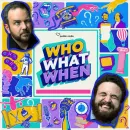27:Fifty was a public affairs program produced by SCETV, hosted by a number of different faces from the studio over its run. Each episode was hosted from a different location, usually a city or large tourist attraction, with the host touring the location and explaining interesting facts about different areas. This was intercut with interesting stories from around the country, produced by PBS affiliates.
The geographic focus of this episode is St. Augustine, Florida, founded in 1565 in the name of the king of Spain, Philip II. St. Augustine served as the capital of Spanish Florida for over 200 years, until the territory became part of the United States. Jim Welch tours the city, profiling some of its key sites and landmarks such as the Old Town district and the home of Ripley’s Believe It or Not.
In the main affiliate segment, the viewer is treated to an in-depth look at the then-ongoing archaeological excavation of Santa Elena, the capital of Spanish Florida before St. Augustine. Located on the current-day Parris Island in South Carolina, Santa Elena was the most successful and lasting Spanish colony in the Carolinas until it was abandoned after a raid by Francis Drake. Artifacts of daily life, colonial affairs, and worship all remained there for hundreds of years until archaeology began. Other segments include a profile of the endangered Attwater’s prairie chicken in Texas and eccentric folk art painter Howard Finster of Summerville, Georgia.
Side Notes:
- Unlike the future speculation in the episode, the Attwater’s prairie chicken survived past 1999 due to extensive conservation efforts. They remain highly endangered, however, having more of their habitat destroyed by oil drilling sites and seriously harmed by Hurricane Harvey in 2017. In February 2021, it was projected that less than 100 still lived.
- Howard Finster was a major inspiration for the famous band R.E.M., and original art pieces of his were used for multiple singles and albums. Other musical groups followed their inspiration, including the Talking Heads.





